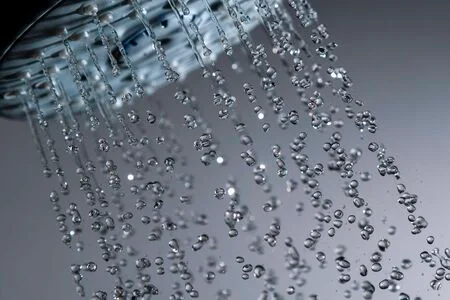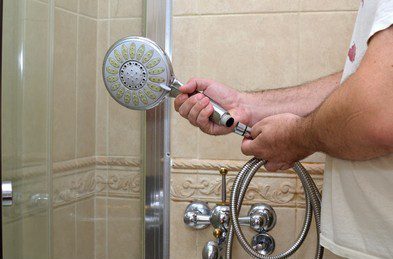11 Mar 6 Ways to Increase Water Pressure in Shower
There’s almost nothing worse than taking a shower with low water pressure. It can take forever to rinse the shampoo out of your hair, or you’ll huddle around the showerhead because the water can not reach you due to pressure. Our top 6 Ways to Increase Water Pressure in Shower Will help you diagnose your unique problem and allow you to start enjoying your showers.
A shower with low water pressure leads to longer showers that use more water and take up more of your time.
Luckily for you, a shower with low water pressure can usually be fixed by yourself. In some instances, however, you may need professional assistance. If that applies to you, consider calling Benjamin Franklin Plumbing Tyler or visiting our website to set up an appointment today.
 What causes low water pressure in the shower?
What causes low water pressure in the shower?
There are many reasons why water pressure could be low in your shower.
A common reason is a clogged water system. For example, a clog can form in your showerhead. In that case, the solution is simple, and you can fix the issue without professional help. However, if the clog lies deeper in your plumbing, you may need to call an expert.
Another reason is that you might have a water restrictor in your showerhead. A typical shower should expel roughly two gallons of water per minute. A water restrictor reduces the amount of water that can flow through a showerhead. They are meant to save you money on your water bill, but you might use more water because it takes longer to wash away soap and shampoo.
Some apartment complexes or rental homes may have water restrictors installed to save water on tenants. However, debris and particles can also build up around the water restrictor over time, further decreasing water pressure.
A showerhead can clog in other areas, too. For example, mineral deposit build-up can occur in and around a showerhead’s nozzles. A dent or fold in a shower hose can also contribute to low water pressure.
 How to Test Water Pressure for a Shower
How to Test Water Pressure for a Shower
It doesn’t take an expert to know if you have low water pressure. For the most part, it’s something you can feel. If it gradually lessens over time, you might have a particle build-up of some kind. If it lowers suddenly, there might be a leak or dent. If it has always felt low, then there might be a water restrictor.
But, to know for sure if you have low water pressure in your shower, here’s a simple method:
First, take a measuring jug, preferably one liter in volume, and place it underneath the shower. Then, turn it on full power. If it takes more than six seconds to fill up the jug, you likely have low water pressure.
Ways to Increase Water Pressure in your Shower
Here at Benjamin Franklin Plumbing Tyler, we’ve identified six ways to increase your shower’s water pressure based on the above-mentioned common causes. Some are simple, and others may need professional assistance.
1. Clean your Showerhead
Simply cleaning out the mineral build-up in your showerhead can fix your water pressure issues. If you can remove the showerhead, do so and scrub out the inside with a toothbrush or dish brush.
If you can’t remove the showerhead, take a plastic bag and fill it with white vinegar. Next, stick the showerhead into the bag and tie it around the showerhead’s neck with a rubber band. The white vinegar will slowly break down the particles and make them soft and removable. Next, take off the bag and run water to see if it’s fixed. This can be a good method to try increasing the water pressure in apartments. Usually in apartments you do not have the ability to do any plumbing work that can fix your water pressure problem.
2. Remove the Water Restrictor
Removing the water restrictor from your showerhead can also improve water pressure. Removal might also clear out mineral build-up around the restrictor.
It’s fine for you to remove one if you live in an apartment unless otherwise stated. Note that your water bill may increase after removal. But, if you take shorter showers because of increased water pressure, your bill should remain about the same.
3. Replace your Shower Hose
A dent in your shower hose can restrict water flow. Take a moment to inspect the hose to see if there are any dents or leaks.
Some showers have plastic hoses. These are better protected against dents and leaks but tend to fold or crease if pulled at the wrong angle. Take notice if there is a hard crease in your plastic shower hose.
4. Make sure your Water Shut-Off Valve is Fully Open
Sometimes, your water shut-off valve may not be fully open. For example, if your apartment building recently had work done or your home had renovations, someone may have turned off the water valve and forgotten to open it or failed to open it all the way. Check under your kitchen sink or near your water heater, where most shut-off water valves are, though the exact location may differ for every home.
Return the level to be parallel with the water pipe to open your water supply fully. This is also a suitable time to check your water heater to ensure you receive hot water and full water pressure.
5. Get Creative
If, for whatever reason, the above methods don’t seem to work, then perhaps your shower water pressure issues are out of your control. That is, your shower water pressure may be dependent on what appliances you are running and when you are showering.
Showering while running a dishwasher or a washing machine will affect your shower’s water pressure. So make sure you do those at separate times.
Also, most people shower right when they wake up or just before bed. If your schedule allows for it, don’t shower at these times. That way, you’ll be showering when water pipes are in less demand, meaning you’ll have more water at your disposal.
6. Call the Pros
If all else fails and you haven’t been able to fix your shower’s water pressure issues on your own, give Benjamin Franklin Plumbing Tyler a call or visit our website to schedule an appointment today.
You may have underlying plumbing issues that extend beyond your shower. A visit from Benjamin Franklin Plumbing Tyler will ensure your home’s water system is working to its full potential.
In conclusion
The ways to increase water pressure in your shower are:
- Clean your showerhead.
- Remove the water restrictor.
- Replace your shower hose.
- Check if your water shut-off valve is fully open.
- Don’t run other water-using appliances while showering and shower at non-peak times.
- Call a professional plumber if all else fails.
Benjamin Franklin Plumbing Tyler serves the East Texas cities of Kilgore, Longview, Tyler, and Whitehouse with a team of certified plumbers. In addition to emergency plumbing repair, some of the plumbing services provided by the company include faucet repair, drain services, toilet repair, plumbing fixture installations, tub and shower installations, kitchen sink repair, faucet installation, water heater repair/replacement, and garbage disposal replacement. Call us today at (903) 730-6611 to schedule an appointment!

